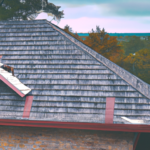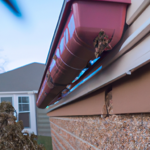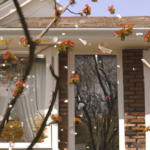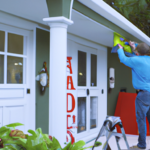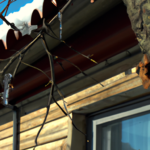How to install a Velux skylight
“Let the sunshine in: A step-by-step guide to installing a skylight.”
Introduction
Installing a skylight can be a great way to bring natural light into a room and add a unique design element to your home. Here are the basic steps to follow when installing a skylight:
1. Choose the location for your skylight and measure the opening.
2. Purchase a skylight kit that fits the opening size and matches the roof pitch.
3. Cut a hole in the roof and install the flashing around the opening.
4. Install the skylight frame and glass.
5. Seal around the skylight to prevent leaks.
6. Finish the interior with drywall or other materials.
It is important to follow all manufacturer instructions and safety guidelines when installing a skylight. If you are not comfortable with the process, it is recommended to hire a professional.
Preparation: Measuring and Choosing the Right Skylight
Installing a skylight can be a great way to bring natural light into your home and add a unique design element to your space. However, before you begin the installation process, it’s important to properly prepare by measuring and choosing the right skylight for your needs.
The first step in preparing to install a skylight is to measure the area where you want to install it. This will help you determine the size of the skylight you need. Measure the length and width of the opening, and then add a few inches to each measurement to ensure that the skylight will fit properly.
Once you have your measurements, it’s time to choose the right skylight for your space. There are several different types of skylights to choose from, including fixed, vented, and tubular skylights. Fixed skylights are stationary and do not open, while vented skylights can be opened to allow for ventilation. Tubular skylights are smaller and are often used in areas where a larger skylight is not possible.
When choosing a skylight, consider the size and shape of your space, as well as the amount of natural light you want to bring in. You should also consider the type of glass used in the skylight, as this can affect the amount of heat and UV rays that enter your home.
Once you have chosen the right skylight for your space, it’s time to prepare the area for installation. This may involve removing any existing roofing materials or cutting a hole in the roof to create the opening for the skylight. It’s important to follow all safety guidelines and use the proper tools and equipment when preparing the area for installation.
Before installing the skylight, it’s also important to ensure that the area is properly insulated and waterproofed. This will help prevent leaks and ensure that your home stays comfortable and energy-efficient.
Once the area is properly prepared, it’s time to install the skylight. This may involve attaching the skylight frame to the roof, installing the glass or plastic dome, and sealing the area around the skylight to prevent leaks.
It’s important to follow all manufacturer instructions and safety guidelines when installing a skylight. If you are not comfortable with the installation process, it’s best to hire a professional to ensure that the skylight is properly installed and sealed.
In conclusion, installing a skylight can be a great way to bring natural light into your home and add a unique design element to your space. However, it’s important to properly prepare by measuring and choosing the right skylight for your needs, as well as ensuring that the area is properly insulated and waterproofed before installation. By following these steps and taking the necessary precautions, you can enjoy the benefits of a skylight in your home for years to come.
Conclusion
To install a skylight, first choose the location and size of the skylight. Then, prepare the roof by cutting a hole and installing flashing. Next, assemble the skylight and attach it to the roof. Finally, seal around the skylight to prevent leaks. It is important to follow manufacturer instructions and safety guidelines during installation.
